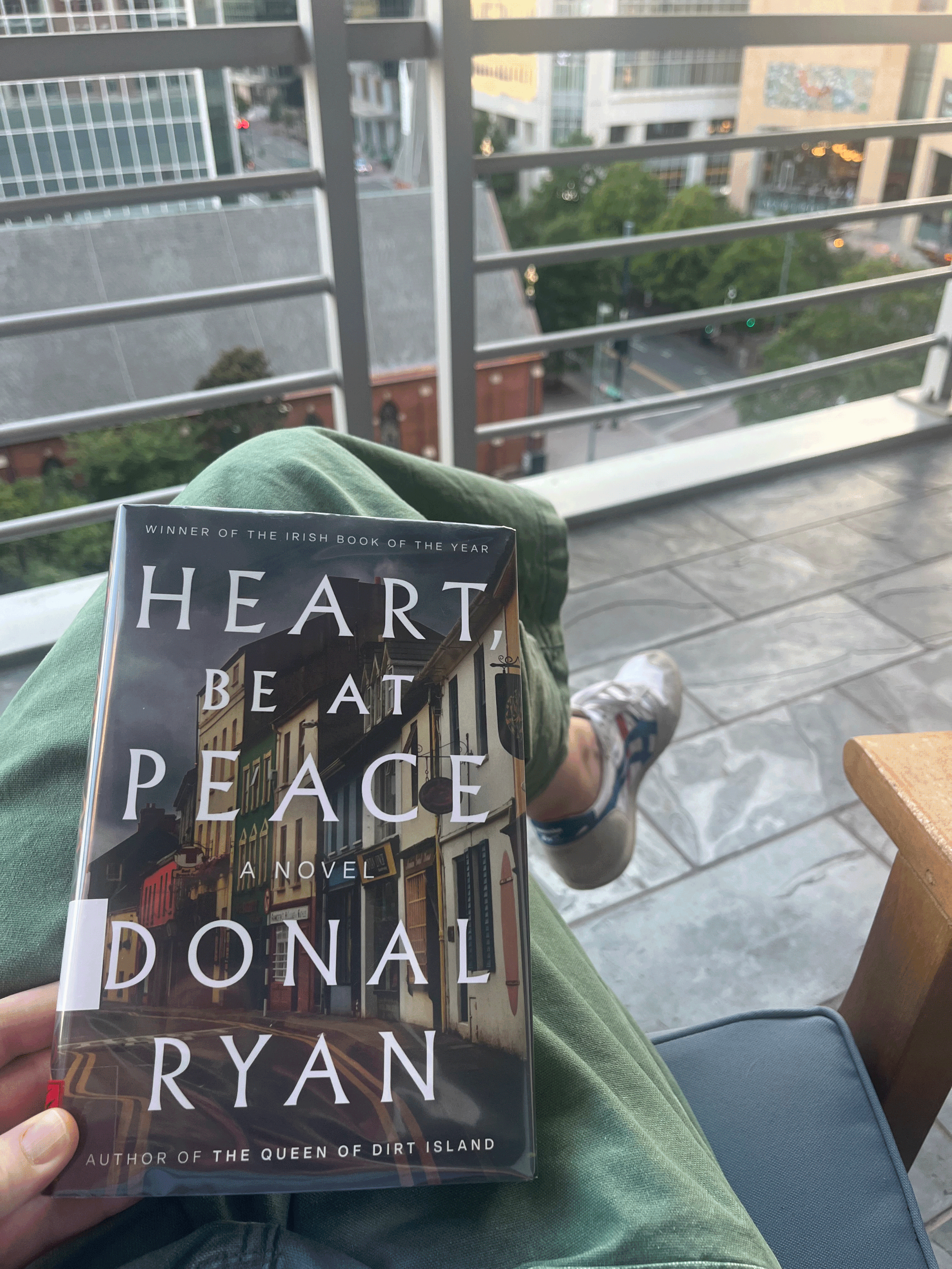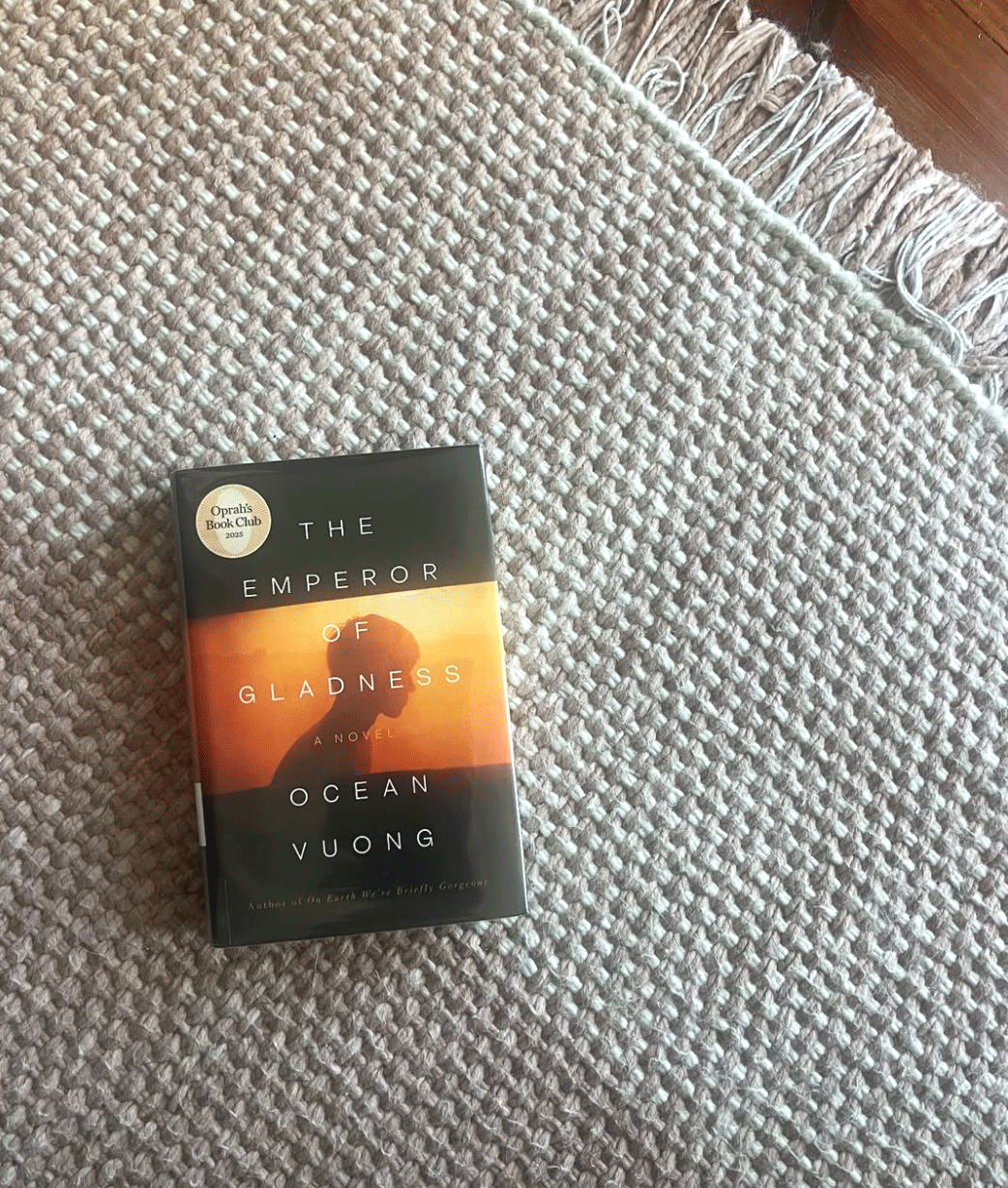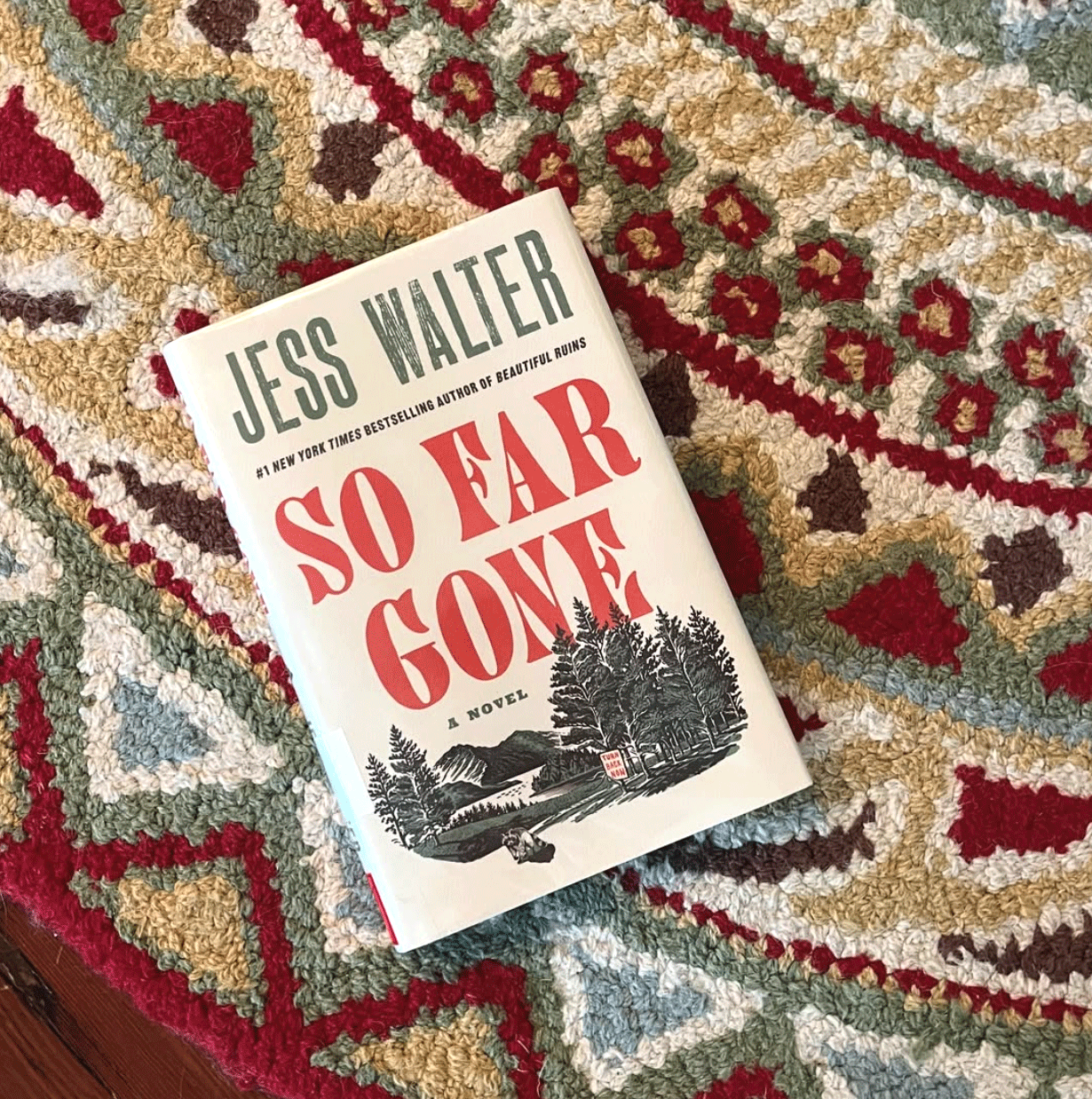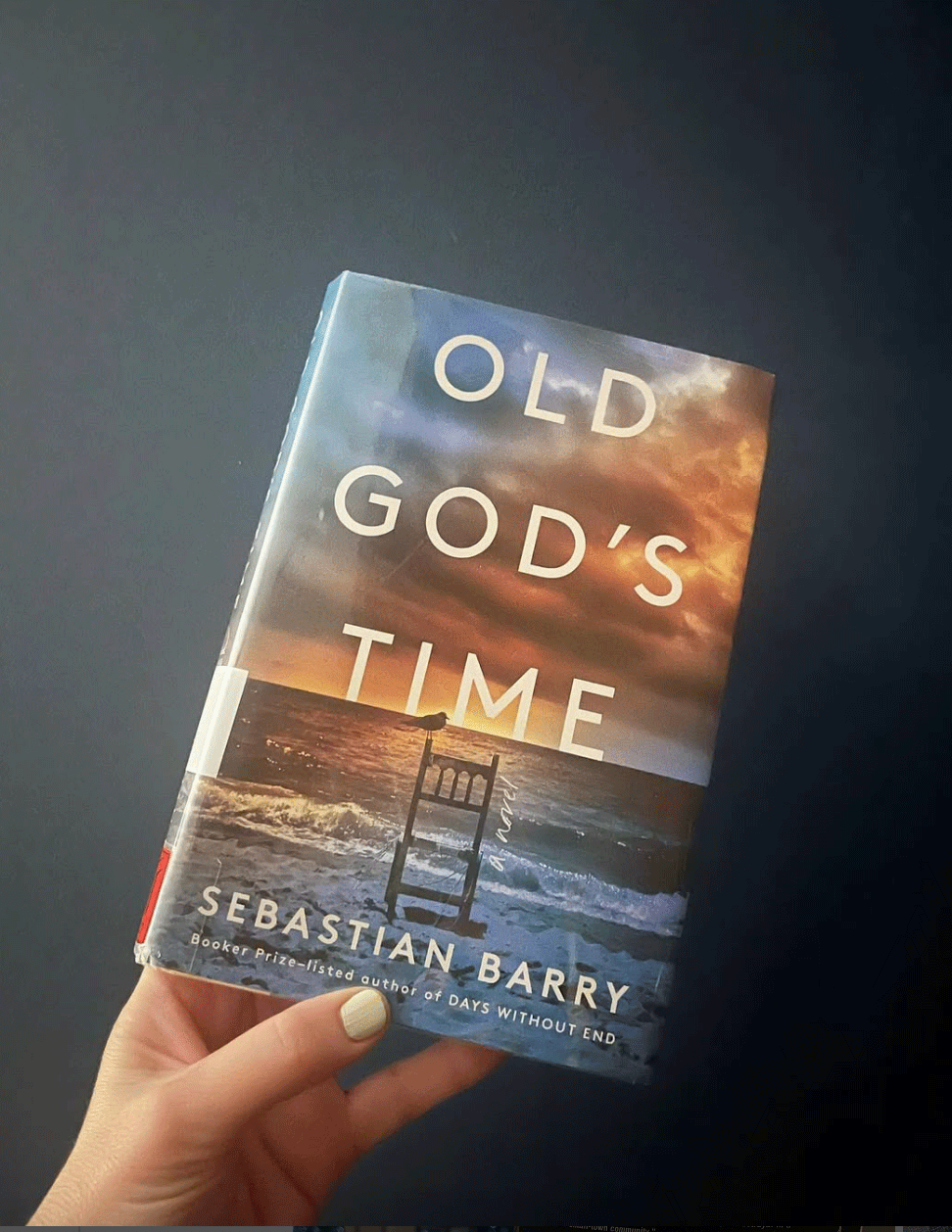
BOOK CLUB
Reading doesn’t need to be a solitary activity! These posts illuminate books that are great for communal discussion; examples of book clubs that are doing this well; commentary on reading together, whether that’s just with one other person or a book club or a larger community entity.
“The Rembrandt light of memory, finicky and magical and faithful at the same time, as the cheaper tint of nostalgia never is.” — The Whistling Season (Ivan Doig)
From Newsletter Issue No. 22:
I’m not on TikTok (thankgoodness) or on this particular “side” of Instagram, but I know that “Day in the Life” content is popular. Everyone likes a good, soup-to-nuts look at the benign details of someone’s life, because — let’s face it — it’s the supposed “benign details” that provide the structure for everything…
“It’s never good to be a fanatic,” said my teacher. I have no recollection of the context; pretty sure she was directing us in a Gilbert & Sullivan production, so maybe she didn’t want us to get fanatical about gondoliers.
I’ve been thinking about what it means to not just live — but to cultivate, and maybe even cultivate with aplomb (!) — a small life. Which mine is. And I suspect that applies to the great majority of us.
I suppose the main thing I took away from The Emperor of Gladness — Ocean Vuong’s second novel, the one that Oprah selected for her book club — is that sometimes the people we are meant to be the closest to are actually the farthest from us.
Something I think about — way too much probably — is whether or not it is possible to live in a vacuum. (Not saying I want to! Just that I find it sort of fascinating, speaking as someone who has lived in many different places.) How much, and to what degree, do our contexts and cultures influence the core of our beings?
We saw The Head and the Heart last week. (Awesome show!) They didn’t play one of my favorites, and I can see it being a bit maudlin for a concert at an outdoor amphitheater anyway. It’s called “One Big Mystery” and is marked with “life’s one big mystery” as a repeated line. Simple stuff, but a true statement nonetheless.
A question after reading Real Americans by Rachel Khong: How often do you suspend disbelief while reading fiction? I don’t mean like “this guy is driving around with his zombie ex-girlfriend” (yes, I’m referring to I Am Homeless if This is Not My Home by Lorrie Moore) or “these sea creatures are talking” (Remarkably Bright Creatures by Shelby Van Pelt, which I have not read yet, but would like to). Those novels are considered literary fiction — not sci-fi — so readers accept the impossible as sort of an artistic method (maybe akin to Picasso’s portraits?) instead of world-building fantasy. No, I guess I mean more like a novel that is trying to be realistic, but instead feels a tiny bit like a sitcom when it comes to the neatly tied-together details.
All Fours by Miranda July: I met with 4 friends to talk about this one the other week. Was it a book club? I guess — we were meeting to discuss a book. There did happen to be wine + cheese (+ Amelie’s macarons thanks to @librarian.in.the.woods). We were all women. But somehow it felt different than what popular culture thinks of as a book club. This open group — not everyone knew each other — was an outgrowth of the trio that met at my place a couple of months ago with History of the Rain (Niall Williams) as our catalyst.
I read a lot of Beautiful Ruins by Jess Walter while in Italy — and even had it in my backpack during our day in Cinque Terre, where a lot of the novel takes place. (Why I didn’t pull it out and take some cool meta pic with the book in the foreground is beyond me…) I think a lot about buildings and structures that endure — maybe especially when they’re perched on a tenuous-looking precipice? — and I love ruminating on the repurposing of spaces. Case in point: Giunti Odeon, a former Renaissance palace in Florence that now houses a café/bookstore/cinema. …
I’ve finished this book and it nonetheless remains a mystery to me — and that is probably why I love it so, so much.
My husband and I read a book together. (Wow, cool, cue massive applause.) This is of interest because Matt is pretty much a self-professed non-reader of books. But back in 2020, he declared he wanted to read an “Amy book” with me. It was awesome, and we read The Overstory by Richard Powers. Fast forward to 2024, and I said, “Let’s do that again!” I had started The Nix and was enjoying the breezy style. So I declared it so.
From Matt:
My boss at a college internship thought I was funny, and remarked that I should try standup comedy. I’m glad my ego didn’t take the bait. I’m the worst storyteller. Since then though, I’ve thought about how fun it would be if I were to jot down comical scenarios & observations that I’ve come across over the years in a notepad. I could workshop them with Amy, and have multiple hilarious bits at the ready when hanging with friends, or maybe even, one day, on stage. I never did that.
More books like this — like Benediction, by Kent Haruf — please.
More books that:
* Rely on simplicity to convey complexity;
* Demonstrate the intricate connections and bonds that cause people to either lean toward each other or — at their worst — fractiously repel one another;
* Embody, well, embodiment. (I think “embody” is such an interesting word, just as I think “incorporate” is a fascinating word. What does it mean to have life’s truths played out via our physical bodies, our corporal selves?)
There’s a lot in this book that touched a nerve for me (namely, bouncing around rentals with young children due to affordability and/or landlord nastiness…been there, done that in NYC and Dublin) and there’s a lot that may touch a nerve for others that I can’t necessarily relate to (navigating different cultures as a biracial person)…
I shared this a few weeks ago in stories, but it needs to be here on the grid. Matt is back. Meaning, he’s back in his Reader Era. Figured today — our 24th anniversary — was as perfect a time as any to post.
“It’s all about value assigned.” This was the key line, for me, in Alice McDermott’s latest, Absolution. Interestingly, I had been sort of turning over this idea of “value” that we assign to things even before reading that line. Said another way: “What’s the point?”
SPECTACULAR. That’s all I have to say.
Erasure — named to The Atlantic’s “Great American Novels” list — is a stellar book. Percival Everett was unknown to me until The Trees made the Booker shortlist in 2022. I read it and thought, “This is different. And lol funny. But serious too.” And then I saw American Fiction and realized it was based on Erasure and thought, “I should read that novel.”
For some reason I thought that maybe I had already read The Namesake … until I started it (because I wasn’t 100% sure) and realized that nope, I had just seen the movie.
I wanted to roll my eyes at yet another celeb book club but I honestly can’t this time. I read this article in print, and then the online version featuring video interviews with Kaia Gerber, daughter of Cindy Crawford. She sounds smart & interesting and wants to be known as “the internet’s librarian” as she prepares to launch something called Library Science this year. She’s 22 and her favorite book is Just Kids by Patti Smith.
Did you know that in addition to Valentine’s Day, February 14 is also International Book Giving Day? (Of COURSE it was @bethanyschlegel who tipped me off to this factoid a few years ago. #whoelse)
I’ve always been fascinated by my family’s history — the lore, the movement from one place to another, the individuals whose quirks (either good or bad) become mythologized in some broad-brush kind of way. There’s nothing particularly dramatic or unusual about my history, but family stories are usually the first kinds that we hear as a child, so we internalize and memorize them and grant them a bit of tidy morality lesson. Maybe you’re this way too?
And this is why Oprah is the queen. I mean, Jesmyn Ward is the queen. But they’re both the queens for different, but linked, reasons.
In 2019, I set out to read one Shakespeare play a month. It’s not that I’m a huge fan of the Bard (like, at all), but it had been a long time since I had immersed myself in literature that made me work the way that older literature demands. Untangling those assemblages of words kept me focused. It was a fun little undertaking…I may do something similar in 2024. (Suggestions?)
I’ve been trying to think of how to describe books like Wellness by Nathan Hill. The first thing that comes to mind is that novels like this are ones that I “gobble up.” They are “smart” and “literary” and often on the longer side. But they aren’t overly taxing. They are generally page-turners, and sometimes you can skim a tiny bit in parts. There are dramatic inflection points, but you know that the author spent a lot of time trying to figure out where best to place them because often these novels involve time shifting. In general, these “gobble up” books span a few generations of a family’s history even if “family dynamics” is not the main focus of the plot. (Wellness is essentially a look at the psychology of love using a middle-aged marriage as its foil.) The authors’ ability to create spot-on characters drawing from contemporary tropes, nuances, and cultural references without stooping to stereotyping is A+. They’re just really, really well-written stories.
On the back of Old God’s Time, Sebastian Barry’s 11th novel, a blurb by Robert Gottlieb reads, “Barry’s novels give us lives, not plots…Every one of his novels is luminous. Not one of them sounds like anyone else.” Yup, yup on that “lives, not plots” commentary — and actually, I wrote about this very idea many years ago for The Curator after reading my first Barry novel. (It was Annie Dunne, purchased at the Dublin Writers Museum … here’s the piece.) These days, I’m more often than not drawn to “plot-less” books — books that mine emotion and motivation instead of relying on “and here’s what happened next” storytelling. But, as laid bare in that essay, I initially found reading a novel like that kind of jarring.
From Newsletter Issue No. 14:
The other day, I came across a draft of my thesis for my masters program. I have a MA in Media Studies, and in 2003 — just a few months before I had my first child (timing is everything!) — I completed an ethnography of a group of children of immigration in one neighborhood in Charlotte, NC and how their media preferences were shaped. Because of guidance from my advisor, I used a framework from a book called Is There a Text in This Class? by the scholar Stanley Fish as a way to frame my own work. In academic circles, Fish is known as one of the main proponents of something called Reader-Response Criticism. The Cliff Notes version of RRC is that the main lens through which to view literature is the reader and his or her experience as opposed focusing on the author. In the introduction to Is There a Text in This Class? Fish writes…
From Newsletter Issue No. 13:
Remember when a little novel called American Dirt by Jeanine Cummins was published in 2020? It was a much-anticipated work of fiction that was meant to shed light on and give voice to people who found themselves in the crosshairs of the migration crisis happening at the border between the United States and Mexico. Oprah selected it for her book club. Stephen King provided a blurb and called American Dirt “Extraordinary.” Sandra Cisneros (family roots in Mexico) and Julia Alvarez (family roots in the Dominican Republic) both praised the book.





























